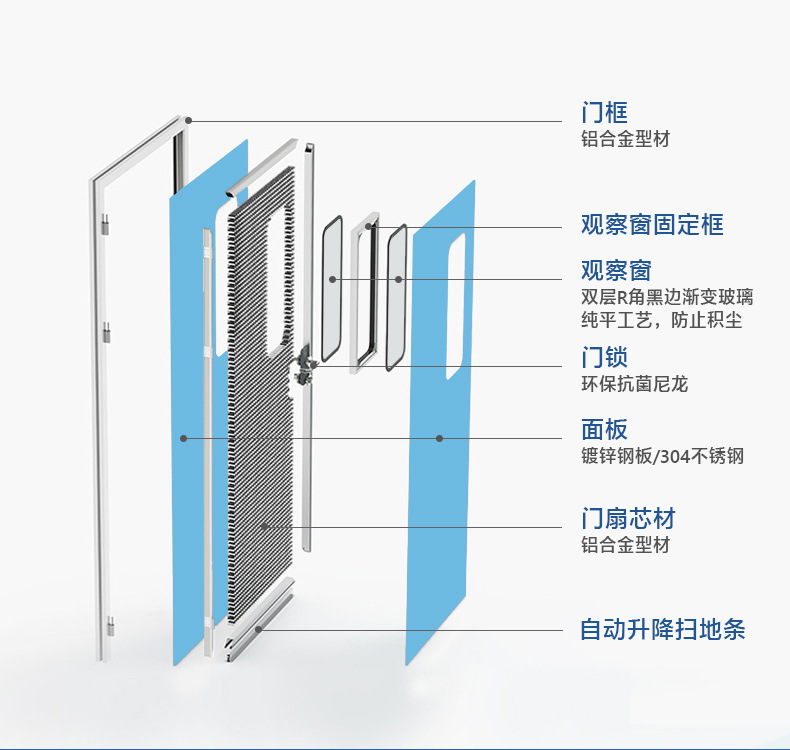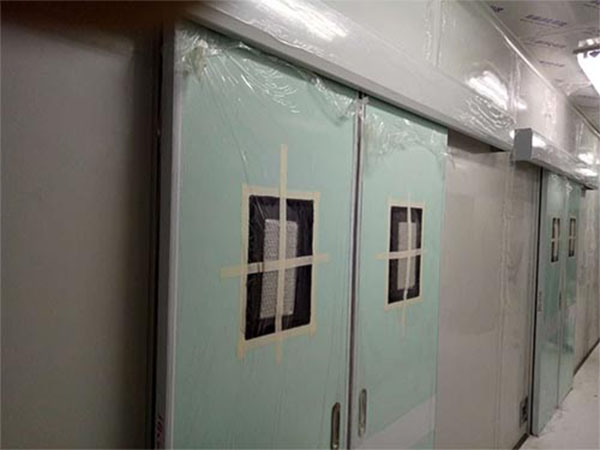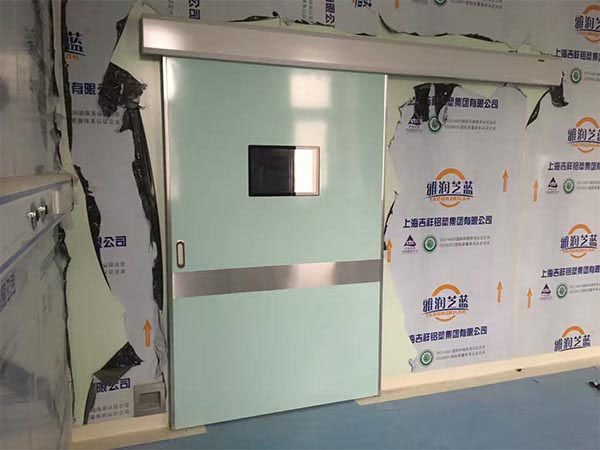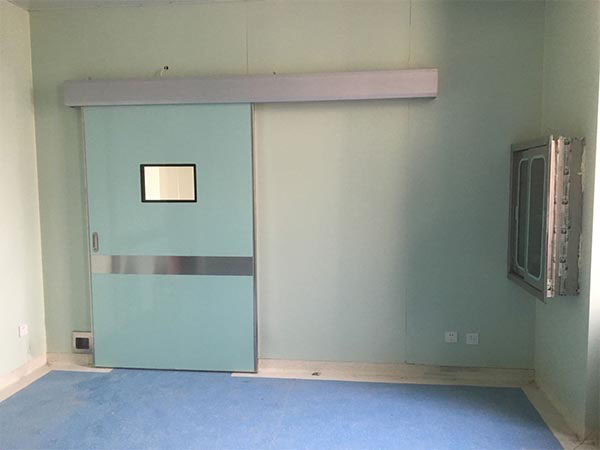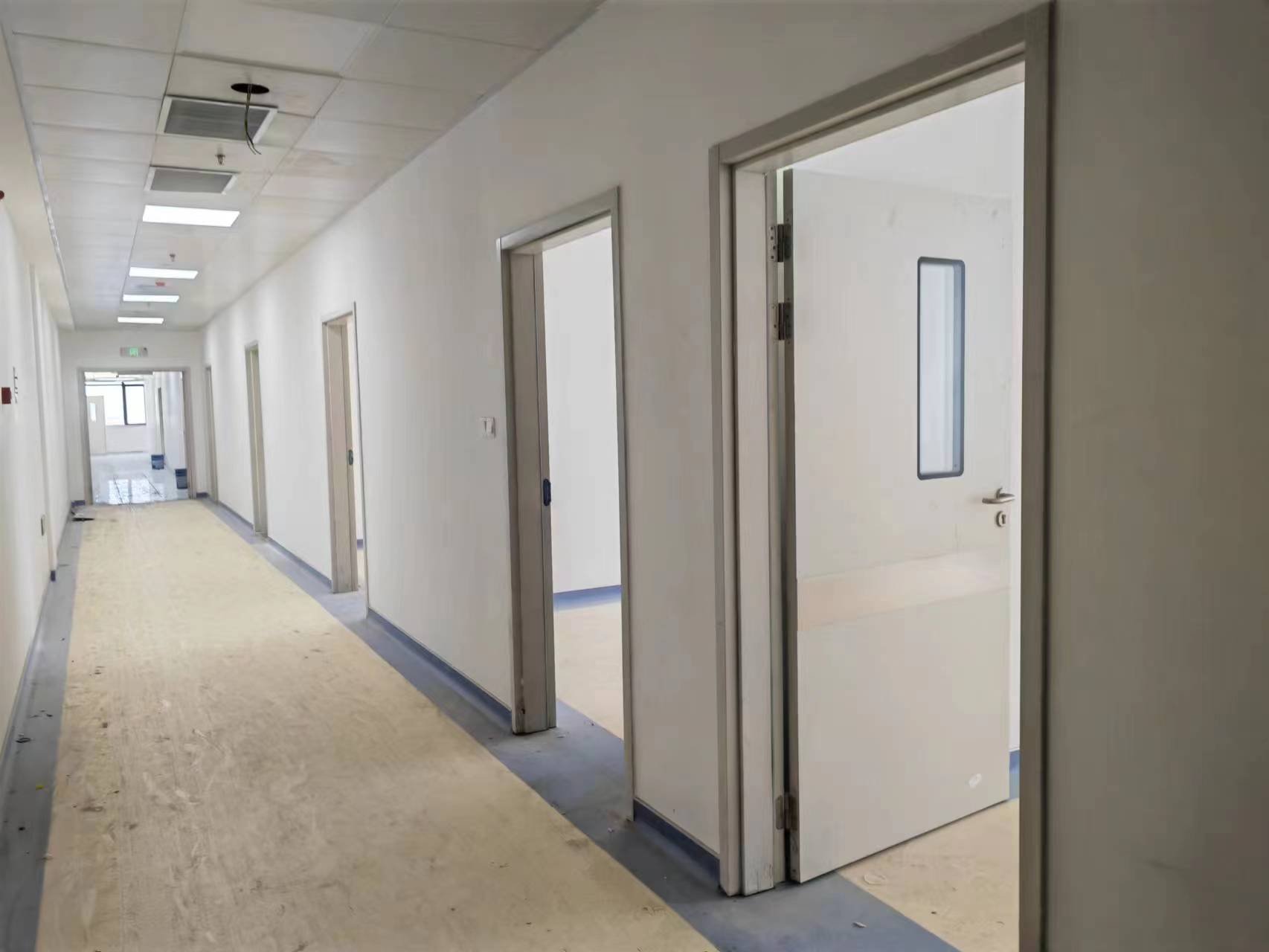
Medical doors typically use materials that are corrosion-resistant, easy to clean, and have antibacterial properties to ensure a clean and hygienic medical environment. The following are commonly used materials for medical doors:
1. Stainless Steel: Stainless steel is one of the commonly used materials for medical doors, with excellent corrosion resistance, durability, and easy cleaning characteristics. Stainless steel has a smooth surface and is not prone to accumulating dust and bacteria, making it suitable for doors in medical institutions.
2. Aluminum Alloy: Aluminum alloy material is lightweight, has good sealing performance, and also has the characteristics of wear resistance, corrosion resistance, and easy cleaning. Aluminum alloy medical doors are suitable for places that require frequent opening and closing, such as operating rooms, emergency rooms, etc.
3. Polyurethane: Polyurethane material has good insulation properties and impact resistance, which can effectively isolate noise and temperature conduction. Polyurethane medical doors are suitable for areas that require silence and temperature control, such as CT rooms, MRI rooms, etc.
4. Pressure Plate: Pressure plate is a material with high strength and durability, commonly used in medical doors that require high impact resistance and fire resistance. Pressure resistant board medical doors are suitable for important areas such as operating rooms, ICUs, etc.
5. Glass: Glass medical doors have the characteristics of high transparency and wide field of view, and can be used for observation and monitoring of areas such as wards. Glass medical doors are usually made of tempered glass or laminated glass to increase safety and fire resistance.

When selecting medical door materials, it is necessary to comprehensively consider factors such as the door's usage environment, safety requirements, fire and smoke resistance, hygiene requirements, etc., and ensure compliance with relevant medical standards and regulations. Meanwhile, different medical institutions may have different needs, and materials can be selected and customized according to the actual situation.





